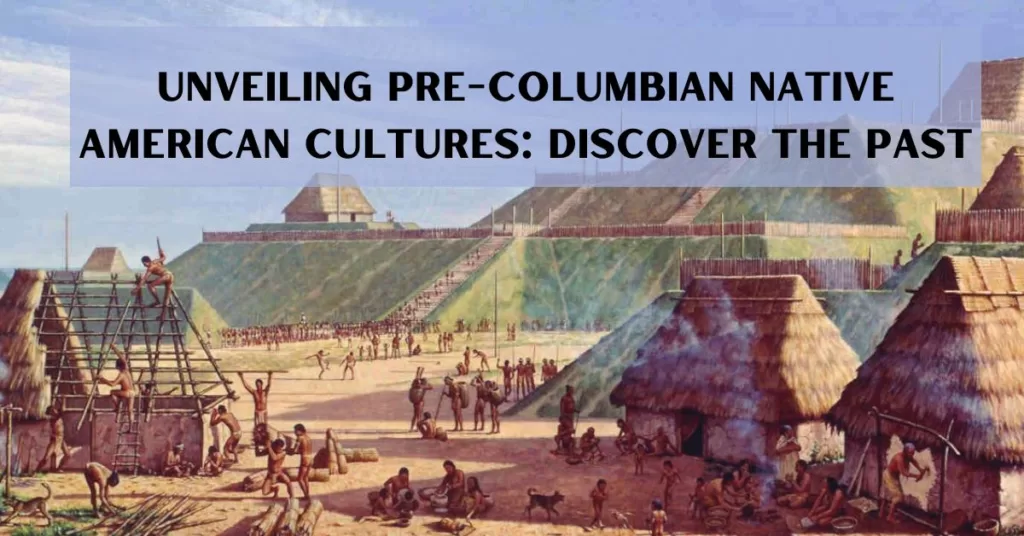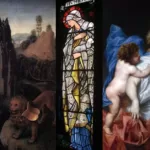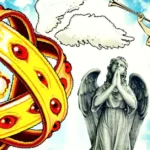Pre-Columbian Native American cultures encompass a vast array of remarkable civilizations that thrived in the Americas before the arrival of Europeans. In this article, we will explore the origins, development, and unique achievements of some of the most influential Pre-Columbian societies, from the Olmecs, Maya, and Aztecs in Mexico to the Ancestral Puebloans and Mississippians in North America. We’ll also delve into the enduring legacy of these ancient cultures, highlighting their impact on modern Native American communities and their lasting contributions to world history and culture. Join us on this fascinating journey through time, as we uncover the captivating stories and accomplishments of these incredible civilizations.
Table of Contents
Defining Pre-Columbian: What Does It Mean?
Before delving into the fascinating world of Pre-Columbian Native American cultures, it’s essential to understand the term “Pre-Columbian” and its significance in the context of this article. The phrase refers to the time period before Christopher Columbus‘s arrival in the Americas in 1492, which marked the beginning of extensive European contact with the indigenous peoples of the New World. By focusing on Pre-Columbian Mexico and other regions, we’ll explore the rich cultural tapestry that existed long before the Europeans set foot on these lands. This journey will unveil the origins, achievements, and legacies of these ancient societies, providing an invaluable glimpse into a lesser-known chapter of human history.
Explanation of the term “Pre-Columbian”
The term “Pre-Columbian” encompasses the diverse histories, cultures, and civilizations that thrived in the Americas before the arrival of Christopher Columbus in 1492. This pivotal event marked the beginning of the European colonization, which dramatically altered the lives of indigenous peoples and their societies. By examining Pre-Columbian Native American cultures, we gain a deeper understanding of their achievements, traditions, and ways of life that predate European influence.
The time period and geographical scope
Pre-Columbian history spans thousands of years, with evidence of human habitation in the Americas dating back to at least 15,000 years ago. This vast time period saw the rise and fall of numerous civilizations, each with its own distinct cultural traits, technological advancements, and social structures.
Geographically, the term “Pre-Columbian” encompasses the entirety of North, Central, and South America. However, this article primarily focuses on Pre-Columbian Native American cultures, with an emphasis on Pre-Columbian Mexico and the surrounding regions. These areas were home to some of the most influential and complex societies of their time, such as the Olmec, Maya, and Aztec civilizations, which we will explore in greater detail throughout this article.

Pre-Columbian Native American Cultures: Origins and Development
As we venture into the captivating realm of Pre-Columbian Native American cultures, it’s crucial to recognize their origins and the development of their complex societies. Throughout the vast expanse of the Americas, diverse civilizations emerged, each with its own unique attributes and contributions to human history. In this section, we will delve into the beginnings of these Pre-Columbian cultures, examining the early inhabitants of the Americas and the factors that led to the establishment of some of the most sophisticated societies of their time. By tracing the roots of these ancient civilizations, we can better appreciate their achievements and the legacies they left behind.
Early inhabitants of the Americas
The story of the early inhabitants of the Americas begins with the migration of people from northeastern Siberia across the Bering land bridge, a vast expanse of land that once connected present-day Russia and Alaska. This migration occurred around 15,000 years ago, during the last Ice Age when lower sea levels exposed the land bridge. Over time, these pioneering settlers dispersed throughout the continent, giving rise to diverse groups of indigenous peoples, each with their own unique languages, customs, and ways of life.
The development of complex societies
As these early inhabitants adapted to their new environments, their societies evolved in tandem, gradually becoming more complex and sophisticated. Agriculture played a pivotal role in this transformation, as the domestication of plants such as maize, beans, and squash allowed for the development of permanent settlements and the growth of larger, more stable populations.
With the rise of agriculture came the establishment of social hierarchies, the emergence of specialized occupations, and the construction of monumental architecture. In Pre-Columbian Mexico and beyond, these advancements laid the foundation for the birth of complex societies, such as the Olmec, Maya, and Aztec civilizations. These cultures, among others, developed intricate systems of governance, religion, and trade, leaving a lasting impact on the history of the Americas.
Throughout this article, we will explore these influential Pre-Columbian Native American cultures in greater detail, uncovering the fascinating stories, accomplishments, and legacies they left behind.
The Rich Tapestry of Pre-Columbian Mexico
Pre-Columbian Mexico boasts a vibrant and diverse array of indigenous cultures, each contributing to the rich tapestry of the region’s history. As we delve into the heart of Pre-Columbian Mexico, we’ll encounter the remarkable stories, innovations, and traditions of the Olmec, Maya, and Aztec civilizations, among others. These complex societies not only shaped the course of Mexican history but also left an indelible mark on the broader landscape of Pre-Columbian Native American cultures. Join us as we explore the awe-inspiring world of Pre-Columbian Mexico and uncover the myriad ways these ancient civilizations continue to captivate and inspire us today.
The Olmec civilization: Origins and accomplishments
The Olmec civilization, often referred to as the “mother culture” of Mesoamerica, emerged around 1400 BCE in present-day Mexico’s Gulf Coast region. The Olmecs are renowned for their monumental stone sculptures, particularly their colossal stone heads, which are believed to represent rulers or elite members of society. Beyond their artistic accomplishments, the Olmecs also developed early forms of writing and a complex calendar system, laying the groundwork for later Mesoamerican cultures.

Art and religion
Olmec art is characterized by its intricate carvings and depictions of both human and animal figures. Many Olmec artifacts, such as jade masks and small figurines, are thought to have religious or ceremonial significance. Olmec religion included a pantheon of deities, many of which were associated with natural elements like water, earth, and fire. These beliefs and practices played a crucial role in shaping the religious traditions of subsequent Mesoamerican civilizations.
The Maya civilization: Maya cities and society
The Maya civilization, which thrived from approximately 2000 BCE to 1500 CE, was a highly sophisticated society that spanned modern-day Mexico, Guatemala, Belize, and parts of Honduras and El Salvador. The Maya built magnificent cities with towering pyramids, grand plazas, and elaborate palaces. Maya society was highly stratified, with a ruling class of nobles and priests overseeing a population of farmers, merchants, and skilled artisans.

Maya achievements in astronomy, writing, and art
The Maya were remarkably advanced in the fields of astronomy, mathematics, and writing. They developed a complex hieroglyphic writing system, used to record historical events, religious beliefs, and astronomical observations. The Maya also excelled in art, creating intricate murals, pottery, and sculptures that provide a vivid glimpse into their daily lives and religious practices.
The Aztec civilization: Rise and expansion of the Aztec Empire
The Aztec civilization emerged around the 13th century CE in the Valley of Mexico, eventually forming a powerful empire that dominated much of present-day Mexico. The Aztecs were skilled warriors and astute political strategists, using a combination of military might and strategic alliances to expand their territory and exert control over neighboring city-states.

The city of Tenochtitlan and Aztec society
At the heart of the Aztec Empire lay the bustling city of Tenochtitlan, an impressive urban center built on an island in Lake Texcoco. The city was adorned with massive temples, ornate palaces, and vibrant marketplaces, showcasing the Aztecs’ architectural prowess and cultural achievements. Aztec society was highly structured, with a strict hierarchy of nobles, warriors, priests, and commoners. Religion played a central role in Aztec life, with numerous ceremonies and rituals honoring their pantheon of gods.
Influential Pre-Columbian Native American Cultures Beyond Mexico
While Pre-Columbian Mexico is home to some of the most well-known and influential Native American cultures, it’s important to recognize the myriad of other remarkable civilizations that thrived throughout the Americas. In this section, we’ll journey beyond the borders of Mexico to explore the fascinating and diverse tapestry of Pre-Columbian Native American cultures that left their indelible mark on history. From the soaring peaks of the Andes to the sweeping plains of North America, these ancient societies continue to captivate our imagination, shedding light on the incredible accomplishments and rich cultural heritage of the Americas’ indigenous peoples.
The Ancestral Puebloans: Chaco Canyon and Pueblo Bonito
The Ancestral Puebloans, previously known as the Anasazi, were a Pre-Columbian Native American culture that inhabited the Four Corners region of the present-day United States. Chaco Canyon, located in modern-day New Mexico, was a significant cultural and spiritual center for the Ancestral Puebloans. The canyon features an array of impressive stone structures, the most notable of which is Pueblo Bonito, a vast, multi-story complex comprising over 600 rooms. This remarkable architectural achievement showcases the Ancestral Puebloans’ skillful masonry and advanced knowledge of geometry and astronomy.

The mysterious abandonment of their settlements
By the end of the 13th century, the Ancestral Puebloans abandoned many of their settlements, including Chaco Canyon. The reasons for this mass exodus remain a subject of debate among historians and archaeologists. Some theories propose that climate change, resource depletion, or internal conflicts may have driven the Ancestral Puebloans to seek new homes elsewhere, leaving behind their once-thriving communities.
The Mississippian Culture: Cahokia and the mound-building tradition
The Mississippian Culture flourished in the southeastern United States between 800 and 1600 CE, establishing large, complex societies centered around the mound-building tradition. Cahokia, located in present-day Illinois, was the largest and most influential city of the Mississippian Culture. The city was home to an estimated 10,000 to 20,000 inhabitants and featured over 120 earthen mounds, including the iconic Monks Mound. These impressive structures served various purposes, from ceremonial platforms to the foundations for elite residences.
The decline of the Mississippian Culture
Like the Ancestral Puebloans, the Mississippian Culture also experienced a decline, with many of their great mound-building centers abandoned by the 16th century. The causes for this decline are not entirely understood, but factors such as climate change, resource depletion, and the arrival of European explorers and diseases may have contributed to the collapse of this once-flourishing civilization.
The Legacy of Pre-Columbian Native American Cultures
As we delve deeper into the rich history of Pre-Columbian Native American cultures, it becomes increasingly evident that their legacy continues to resonate in the modern world. These ancient civilizations not only shaped the cultural landscape of the Americas but also made lasting contributions to our collective human heritage. In this final section, we’ll reflect on the enduring impact and significance of these remarkable societies, exploring how their innovative achievements, unique artistic expressions, and profound spiritual beliefs continue to inspire and captivate us today. From the colossal stone heads of the Olmecs to the soaring pyramids of the Maya and the intricate mound structures of the Mississippians, the Pre-Columbian Native American cultures leave a legacy that transcends time and continues to enrich our understanding of the human experience.
Influence on modern Native American communities
The legacy of Pre-Columbian Native American cultures lives on in the customs, traditions, and beliefs of their modern-day descendants. Many contemporary Native American communities continue to practice ancient rituals, tell ancestral stories, and preserve their cultural heritage through art, dance, and music. These connections to the past serve as a vital link to their ancestors, reinforcing a sense of identity and pride in their rich history. Moreover, modern Native American communities actively work to preserve and protect their ancestral lands and archaeological sites, ensuring that future generations can appreciate and learn from the remarkable accomplishments of their forebears.
Contributions to world history and culture
The Pre-Columbian Native American cultures made significant contributions to human history, leaving an indelible mark on the global cultural landscape. Their accomplishments in agriculture, astronomy, engineering, and urban planning demonstrate their ingenuity and capacity for innovation. The Pre-Columbian civilizations were also responsible for creating complex writing systems, intricate art forms, and sophisticated calendars that still captivate scholars and enthusiasts alike. By studying the achievements and history of these ancient societies, we gain a deeper understanding of the diverse tapestry of human civilization and the profound impact these cultures have had on shaping our world today.
Conclusion
In conclusion, the study of Pre-Columbian Native American cultures offers invaluable insights into the diverse and innovative civilizations that once flourished across the Americas. Through our exploration of the Olmecs, Maya, Aztecs, Ancestral Puebloans, and Mississippians, we’ve discovered their unique achievements in areas such as agriculture, astronomy, engineering, urban planning, art, and religion. As we continue to learn from these ancient societies, we deepen our understanding of the human experience and our shared cultural heritage. By preserving and honoring the legacy of these remarkable cultures, we ensure that their stories and accomplishments live on, inspiring future generations to appreciate and celebrate the rich tapestry of human history.

Joyce Ann Tyldesley is a renowned British archaeologist, Egyptologist, writer, and broadcaster.






